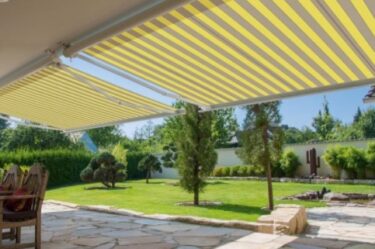
Home renovation can sometimes be inevitable, and procrastinating may not be the right thing to do. For instance, you can’t sit under a leaking roof and wait for the damage to get worse. If your house is screaming for renovation, you may need some urgent cash so that your home is ready for any weather conditions.
Unlike minor repairs that are easily handled along with other monthly expenses, major home repairs could probably require a considerable reserve fund. However, there are possibilities that you haven’t built an emergency fund yet, or your emergency fund isn’t big enough to meet your home improvement needs. You need not worry as we’re going to tell you about some other ways to finance urgent home improvement projects.
Option #1 Traditional Home Improvement Loans
The first and obvious option that homeowners can think of is a traditional home improvement loan. This allows you to pay for the labor and material cost that is usually paid in a lump sum, sometimes even before the repair begins. Also, these loans are generally unsecured, so you can keep your rainy-day fund for any other emergency and get a traditional home improvement loan without providing any collateral.
Who offers home improvement loans? You can get loans for home improvement from credit unions, traditional banks, and even online lenders. Since these are unsecured loans, you should be prepared to pay a slightly higher interest rate than you would for a secured loan, such as a home equity loan. However, in some cases, interest rates might also depend on your creditworthiness. You also have an option to choose quick and easy installment loans that allows you to keep your payments fixed and budget-friendly.
Option #2 Home equity loans and home equity lines of credit (HELOC)
As you pay your mortgage, you start to build equity in your home. Home equity loans, as the name suggests, allow you to take out a loan against this equity. You can easily borrow a lump sum of money at once to finance your home renovations, and all this at a comparatively low-interest rate. This is because your home secures the loan. In simple words, home equity is the difference between your house’s fair market value and the loan balance. If you are looking for loans with long repayment periods like home equity loans, home equity lines of credit (HELOCs) could also be a good option for you. HELOCs have more or less the same features as home equity loans, and even the interest you pay is tax-deductible if you itemize it on an income-tax return. In both cases, ensure that you don’t default your payments since they are a type of secured loan.
Who offers home equity loans? Again, when we talk about loans, banks are the first option that comes to mind. And because a home is often the most hard-earned asset for many, you should be very sure while getting a loan against the equity in your own house.
Option #3 Home Improvement Loans with No Equity
Are you a new homeowner? Don’t worry if you’ve not built any equity in your house yet. There’s a home improvement loan without equity for your rescue!
Since it’s too early for you to have much equity in your own home, you can apply for a home improvement loan with no equity to make a few changes in your house. The best part of this loan is that they allow you to borrow up to 125% of the present value of your house, which is much more than the loan limit set by traditional home improvement loans.
Who offers home improvement loans? You might be familiar with the Federal Housing Administration. Apart from helping low-income borrowers and first-time homebuyers to buy a house, they offer loans without any equity requirements for your home improvements. When we talk about unsecured loans, there are also a lot of lenders, especially online lenders, who are interested in offering home improvement loans with no equity. Since there is no collateral attached and even the loan limit is quite high, you need to have an impressive credit score to qualify for this loan.
Option #4 Mortgage Refinance
Who thought that a high-interest mortgage loan could help you finance your emergency home repairs? Yes, that’s right! If you have a loan whose interest rate has dropped since you bought your house, mortgage refinancing or cash-out refinancing is the best thing to do. This way, you can get more time to pay off your loan and a great chance to get more money at a lower interest rate so that you can pay for your home renovations.
What happens when you refinance? Suppose your home is worth $200,000 for which you had taken a loan of $180,000. Let’s say you’ve paid $90,000. You can get a new lender who can pay off your existing loan balance and offer you a loan of $120,000 against the equity in your house. Now you have $30,000 for your home improvement project.
Although there are many sources by which you can finance your emergency expenses, it’s better to narrow down your options to what works for you. You could also look for home improvement grants, also called a “home repair grant”. The government issues these grants at the federal, state, or municipality level, mainly to help homeowners who can’t afford to fund a significant home repair or renovation. The next time your roof leaks, or there’s any urgent home repair that demands prompt action and upfront capital, choose a finance option that might be perfect for your needs.



